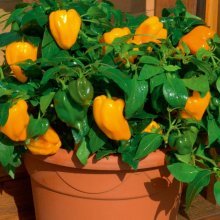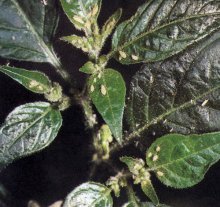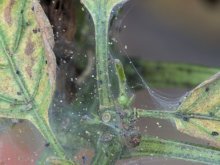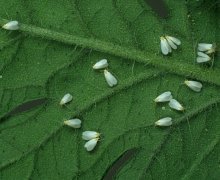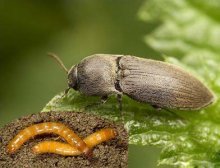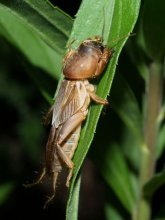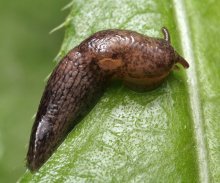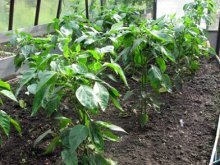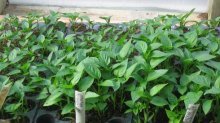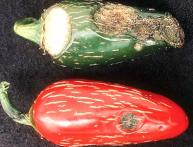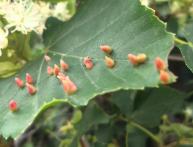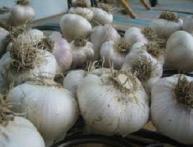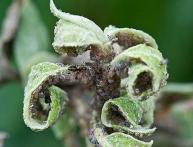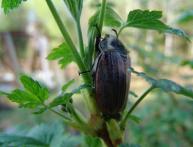Protecting pepper seedlings from pests

Juicy, hot, sweet and fragrant - all these characteristics relate to one unique vegetable - pepper, which will add a touch of piquancy to any dish. And how nice it is to eat a sweet slice of pepper in a salad or feel its spiciness in a Mexican soup. But it’s even nicer to receive good harvest from your own garden.
Process pepper growing not complicated, but its protection requires certain knowledge. So today I want to share information about seedling pests pepper and ways to combat them.
Content:
Pepper varieties
For successful pepper growing correct selection plays an important role varieties, on which not only the productivity, but also ripening time, frost resistance, taste and susceptibility of the vegetable to diseases and pests. Knowledge and correct selection of varieties will simplify the growing process.
Pepper has more than two thousand varieties, which I would divide into several categories:
- Sweet pepper varieties
- Hot pepper varieties
- Pepper hybrids
- Pepper varieties for balconies and window sills
TO sweet varieties peppers include: Ivanhoe, Agapovsky, Accord, Alyonushka, Atomor, Bagration, Belladonna, Snow White, Turquoise, Pinocchio, Fidelity, Victoria, Denis, Dobryak, Eroshka, Yellow Bell, Zarya, Isabella, Prometheus, Florida and many others.
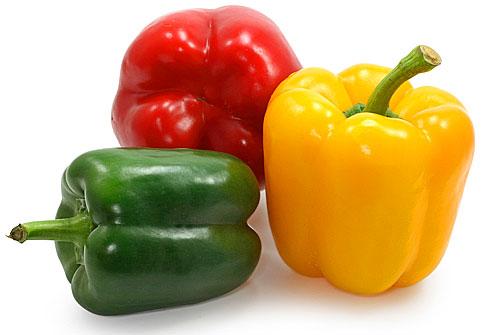
Top ten varieties hot pepper headed by: Adjika, Indian Summer, Hungarian Yellow, Magic Bouquet, Gorgon, For the Mother-in-Law, Coral, Red Fat Man, Fiery Maiden, Ogonyok.

Pepper hybrids They are popular because they are resistant to diseases, pests and are not afraid of temperature changes. Common types are: Adler, Ararat, Erivan, Kazbek Terek.
Balcony and indoor varieties include Watercolor, Candy, Chanterelle, Treasure Island, Tomboy, Yarik. These types of peppers are stunted and the fruits are small. One advantage is that peppers can be grown in small containers in an apartment or on a balcony.
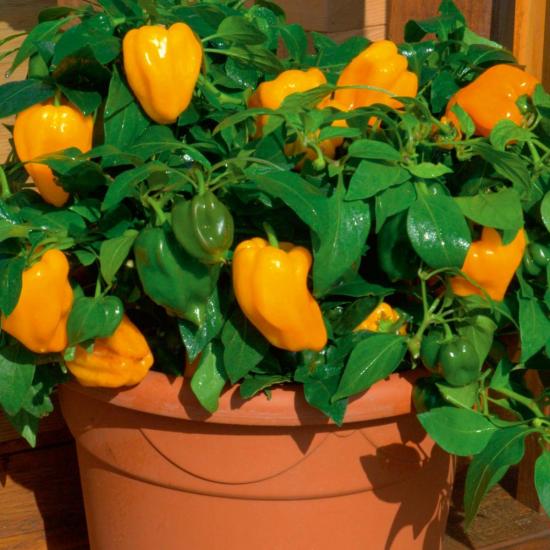
Pests of seedlings
Having planted the seeds, we eagerly await the emergence of a sprout. And then that day came: the stem broke through, turned green, and began to grow. We start with the potty plant seedlings in the greenhouse or directly on the garden bed. It is from this moment that danger arises. Pests begin to attack the pepper:
Aphid
Aphids are the most common pest; they attack shoots, leaves, inflorescences, cause curling and falling of greenery, and underdevelopment of the fruit. Optimal living conditions aphids is a temperature of +22 - +25 degrees Celsius and air humidity within the range of 75 - 85%. This is the wet summer period. Over the entire fertile season of pepper, aphids can produce more than 20 generations, which will injure the plant until the entire crop is destroyed.
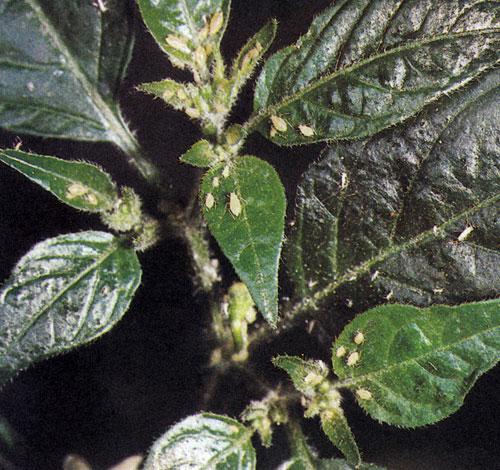
Spider mite
This parasite prefers to attack pepper seedlings in greenhouse conditions. All climatic conditions have been created for them here. The parasite settles on the bottom of the leaf and covers it with a thin cobweb. As a result, the leaf loses color, curls and falls off. Wherein mite does not die, it continues to feed on the cell sap of the stem, which contributes to the death of the inflorescence and the fruit itself.
The period when ticks appear is the second half of June, when the air is dry and plants They don't get the moisture they need. Unlike aphids, one generation of mites requires from a week to one month to reproduce. Therefore, the number of generations of this parasite is much smaller.
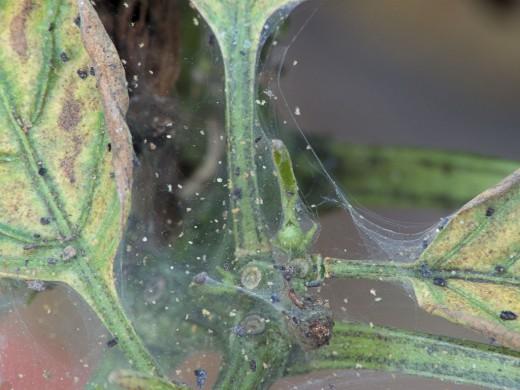
Greenhouse whitefly
Whitefly - the most dangerous pest pepper seedlings, because due to its size of 1.5 mm and an inconspicuous pale body, it is completely invisible. The body of this insect is covered with a waxy coating and secretes honeydew, saturated with sugary substances. It is they who pollute the surface of the leaves, draw out moisture from them, and as a result, the plant dries out.
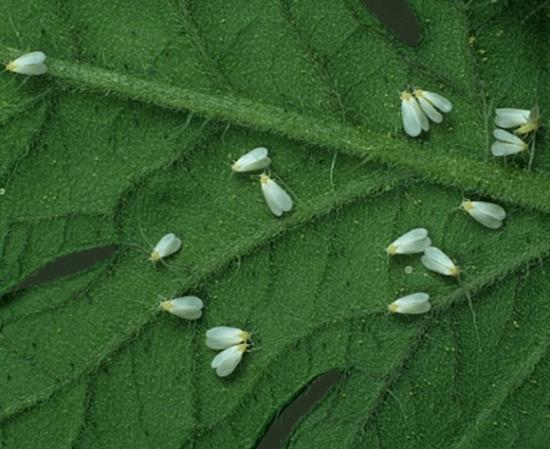
Wireworms
The larva of the click beetle insect is called wireworm. Unlike the above pests, wireworms attack the root of the seedlings themselves. They live and reproduce in the soil at a depth of 10–15 cm for 5 years. Amazing pepper, they are slowly killing him. The infected plant begins to lag in growth and quickly dies.
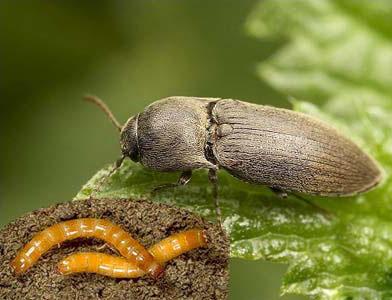
Medvedka
The mole cricket is a pest up to 5 cm in size, dark brown in color, which prefers to live in damp soil, rich in humus. The danger of this insect is that it begins to destroy plants from the very beginning. sowing. The parasites make underground passages for themselves and gnaw through the roots and stems.
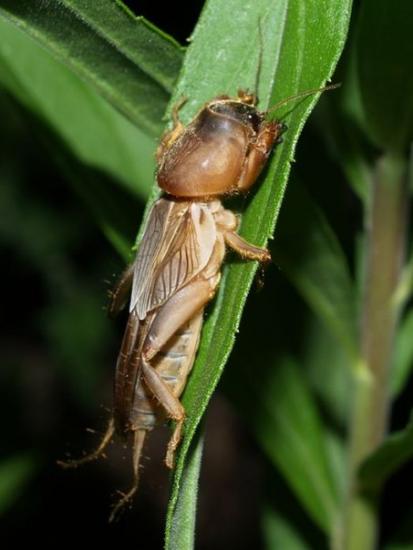
Slugs are naked
For lovers of growing peppers in film greenhouses And greenhouses you need to know about the naked slug - a pest of pepper seedlings that prefers too moist soil and feeding at night. Slugs eat mainly leaves, gnawing large holes and eating them completely. After eating the greenery, they destroy the flowers and young fruit.
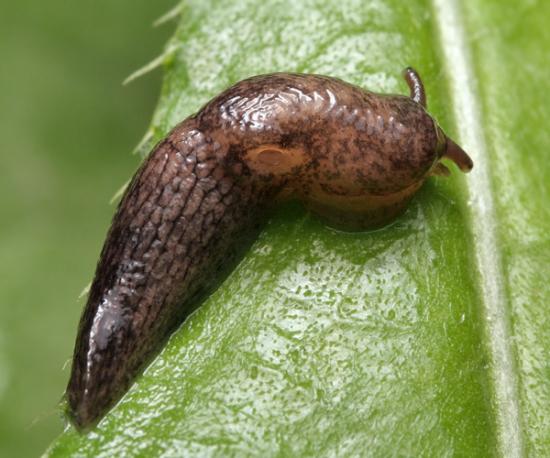
Fighting methods
Pest control is an important part of the vegetable growing process. There is probably no period when crops were grown without intervention. There will always be a parasite that wants to spoil the plant.
Knowledge methods of struggle against pests of pepper seedlings, will help avoid the death of the vegetable and preserve the harvest.
Methods for controlling aphids
The most effective way to control aphids is spraying the plant a decoction of wormwood, yarrow or a solution of pesticides.
For wormwood decoction you will need:
- 1 kg of crushed and dried wormwood.
- Water
The wormwood is boiled for 15 minutes. After cooling the broth, filter and add 10 liters of water. To make the decoction more sticky to the leaves, you can add a few grams of soap. Pepper leaves are sprayed with this solution, killing aphids.
Yarrow recipe:
- 800 grams of dried plants
- Boiled water
The crushed plant is poured with boiling water for 2 days, then filtered and 20 grams of soap are added for every 10 liters of liquid. This remedy is very effective, since the body of the aphid is covered with a burning soap solution, and the insect dies.
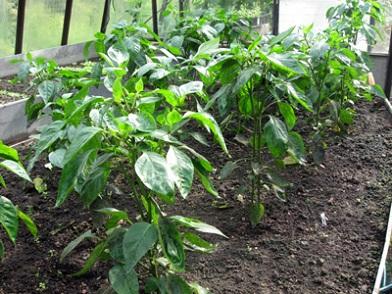
Methods for controlling spider mites
The most proven way to combat this parasite is preliminary greenhouse treatment bleach. For 10 liters of water use up to 200 grams of powder. Since the tick overwinters well, such disinfection will kill the larvae.
Also used in the fight against ticks biological method – Phytosailus mites are bred. It kills the opponent without injuring the plant.
Methods for dealing with procrastination
In the process of dealing with procrastination, a very cunning method is used. Between the rows of plants, piles of herbs and vegetables are laid out to attract beetles: straw, beets, carrots, potatoes. All this attracts parasites. After 2 - 4, having accumulated in the grass den, the insects are removed and killed

Methods of dealing with mole crickets
One of the reliable ways to combat mole crickets is to set traps. After harvest, manure is poured into holes up to 40 cm deep. As you know, it maintains temperature very well, so mole crickets make an “office” here for the winter. In the spring, these areas are dug up and the pests are destroyed. These pests of pepper seedlings are also frightened by the smell of kerosene and naphthalene. Places where the parasite accumulates can be treated with these agents.

Methods for dealing with naked slugs
Since this parasite prefers greenhouse and greenhouse environments, it is not worth it moisten the soil, You should ventilate the room more often, prevent weeds from sprouting, and spray the soil with a mixture of lime and tobacco.
Performing all these actions is the key to the health of pepper seedlings.
For proper care of pepper seedlings, some tips presented in this video will be useful. For example, you will learn how to plant peppers correctly and what soil should be prepared for planting.
In this video, the presenter will talk about the benefits of peppers, when and how to plant them, how often to water them so that the floor is juicy and crispy.



